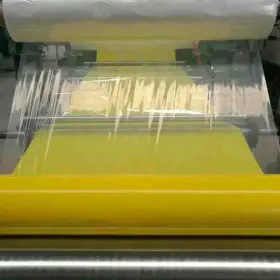Does Silicone Rubber Break Down Over Time?
Silicone rubber, hailed for its versatility and widespread use, prompts the question: does it break down over time? The short answer is yes, but let's dive deeper into the intricacies of this remarkable material. Understanding the composition, durability, and real-life applications of silicone rubber is crucial for those relying on it in various industries.
Silicone rubber has become a staple in modern manufacturing, finding its way into an array of products we encounter daily. Its resilience and flexibility have made it indispensable, but does it stand the test of time? Let's unravel the journey of silicone rubber's durability.
Composition of Silicone Rubber
Silicone rubber is a synthetic material primarily composed of silicon, carbon, hydrogen, and oxygen. What sets it apart is the silicon-oxygen backbone, conferring remarkable stability. This composition ensures that silicone rubber is not prone to the same wear and tear as traditional rubber.
Durability and Aging Process
While silicone rubber is renowned for its durability, it is not invincible. Over time, factors such as exposure to UV rays, extreme temperatures, and harsh chemicals can contribute to its aging process. However, compared to many other materials, silicone rubber maintains its integrity for an extended period.
Environmental Impact
Understanding the environmental impact on silicone rubber is crucial. Extreme temperatures, whether scorching heat or freezing cold, can influence its structural integrity. UV exposure can lead to the degradation of the material, emphasizing the importance of choosing the right type of silicone for specific applications. Additionally, exposure to certain chemicals may accelerate the breakdown process.
Real-life Applications
Silicone rubber's versatility shines in real-life applications. From kitchenware and medical devices to automotive parts and electronics, this material plays a pivotal role. Its ability to withstand varying conditions makes it ideal for seals, gaskets, and insulation. The elasticity of silicone rubber ensures a secure and lasting fit in these applications.
In the medical field, silicone rubber is a go-to material for implants and medical tubing due to its biocompatibility. In the automotive industry, it seals and insulates critical components, enduring the rigors of engine heat and environmental exposure. The use of silicone rubber in electronics, especially for keypad buttons and seals, highlights its resistance to wear and tear.
Testing and Research
Ongoing research delves into the durability of silicone rubber. Various testing methods, including exposure to simulated environmental conditions, help manufacturers understand its long-term behavior. These tests aid in improving formulations and developing preventive measures to enhance silicone rubber's lifespan.
Preventive Measures
To extend the life of silicone rubber, manufacturers and users can adopt preventive measures. Choosing the right type of silicone for specific applications, implementing proper maintenance, and minimizing exposure to harsh conditions are essential steps. Regular inspections and early replacement of worn-out silicone components can mitigate potential issues.
Conclusion
In conclusion, while silicone rubber does undergo aging and breakdown over time, its durability and versatility make it a reliable choice for a multitude of applications. Understanding its composition, susceptibility to environmental factors, and the importance of preventive measures is crucial for maximizing its lifespan. Silicone rubber continues to be an invaluable material, adapting to the evolving needs of various industries.



